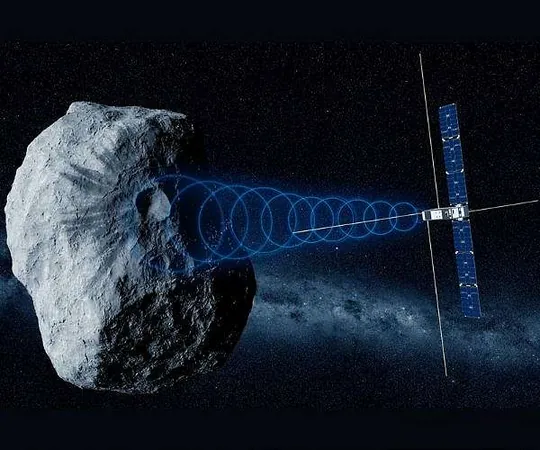
Unprecedented Northern Lights Captivate Audiences Farther South – What You Need to Know!
2024-10-11
Author: William
Introduction
Recently, a series of exceptionally intense solar storms have mesmerized skywatchers with stunning displays of the northern lights, stretching farther south than usual. Spectators from regions including parts of Germany, the United Kingdom, New England, and even New York City have been treated to a vibrant array of colors—pinks, purples, greens, and blues—dancing across the night sky.
Cause of the Northern Lights
According to the U.S. National Oceanic and Atmospheric Administration (NOAA), a severe geomagnetic storm alert was issued recently after significant solar activity was detected. These storms not only heighten the chance of experiencing auroras but can also disrupt power and communication systems. However, so far, no major disruptions have been reported.
What Causes the Auroras?
So, what exactly causes these spectacular light shows? The sun emits energy and charged particles known as the solar wind. Occasionally, it expels large bursts of energy, termed coronal mass ejections, resulting in solar or geomagnetic storms. While the Earth's magnetic field protects us from the bulk of this activity, some particles manage to penetrate down the magnetic lines at the poles, colliding with atmospheric gases. This interaction generates the brilliant colors we see—blue and purple hues from nitrogen and red and green from oxygen.
Current Solar Activity
The increase in solar storms lately can be attributed to the sun nearing the peak of an 11-year cycle called the solar maximum. In May, the sun released its largest flare in almost 20 years, coinciding with a string of intense solar storms that resulted in auroras appearing in areas that typically don't experience them.
Tips for Viewing the Northern Lights
For those eager to catch a glimpse of the northern lights, NOAA suggests escaping the bright city lights and heading to darker areas. The prime time for viewing is usually an hour or two before or after midnight, especially during the spring and fall equinoxes when the solar wind's interaction with the Earth’s magnetic field peaks.
Conclusion
Don't miss your chance to witness these stunning natural displays before the current solar cycle begins to wane! Whether you're an avid skywatcher or simply curious about nature's wonders, keep an eye to the sky for this breathtaking phenomenon.









 Brasil (PT)
Brasil (PT)
 Canada (EN)
Canada (EN)
 Chile (ES)
Chile (ES)
 España (ES)
España (ES)
 France (FR)
France (FR)
 Hong Kong (EN)
Hong Kong (EN)
 Italia (IT)
Italia (IT)
 日本 (JA)
日本 (JA)
 Magyarország (HU)
Magyarország (HU)
 Norge (NO)
Norge (NO)
 Polska (PL)
Polska (PL)
 Schweiz (DE)
Schweiz (DE)
 Singapore (EN)
Singapore (EN)
 Sverige (SV)
Sverige (SV)
 Suomi (FI)
Suomi (FI)
 Türkiye (TR)
Türkiye (TR)